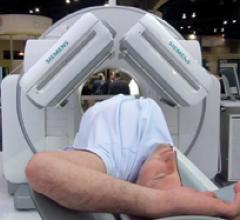If you enjoy this content, please share it with a colleague
Philips
RELATED CONTENT
The radiation therapy market, hit hard in 2009 by the recession, saw a sharp decline in purchasing from which it has slowly recovered. During the last five years the market has been steadily growing, with capital equipment budgets for radiation oncology sites increasing. However, it has only been within the last year that equipment purchases for radiation therapy have leveled out. Purchasing decisions today are driven by two main factors: advancements in technology, including more targeted treatment, multifunctional capabilities and improved patient safety; and the evolving reimbursement model, which weighs patient outcomes and the quality of care delivered more heavily.
As research and development continues to reveal the benefits of medical imaging in healthcare, vendors are steadily improving imaging scanners for added efficiency and workflow. Because advanced visualization technologies are a part of the larger medical imaging discussion, these products are also evolving and growing in response to innovation within medical imaging.
Radiation dose management has come to the forefront of healthcare concerns with both patients and providers advocating for measures that will decrease and manage exposure. Research has shown that medical imaging has doubled the public’s exposure to ionizing radiation since the 1980s, and while this statistic includes fluoroscopy, angiography, mammography and standard X-ray, computed tomography (CT) has contributed the majority of the dose increase.
According to The Medical Diagnostic Ultrasound Market in the USA: Challenges & Opportunities in the New Millennium, 2013 report, the U.S. ultrasound market grew almost 3 percent last year compared to 2012 to reach an all-time high of $1.44 billion.
Imaging is critical to all medical specialties so it is logical that images should be available to specialists outside of radiology. There is a trend to reduce repeat exams by making images more easily accessible, including prior exams. This traditionally has been accomplished using the cumbersome process of mailing or physically carrying CDs to referring physicians. Often these CDs do not open or take a long time to download. Stage 2 Meaningful Use requirements for certified electronic medical records (EMR) also call for the sharing of medical images electronically to help improve efficiency and reduce healthcare costs. All of these factors have given rise to remote image access systems.
Since entering the market in 2001, PET/CT (positron emission tomography/computed tomography) has come a long way in combining the benefits of individual PET and CT imaging. Last year saw the release of several new innovative technologies, marking improvements on previous generations of PET/CT, such as continuous data acquisition and bed motion, as well as higher image resolutions.


 June 03, 2014
June 03, 2014 




